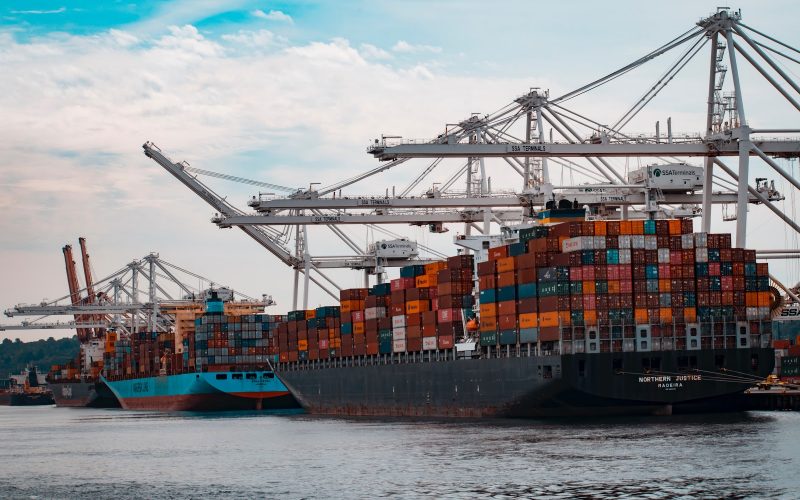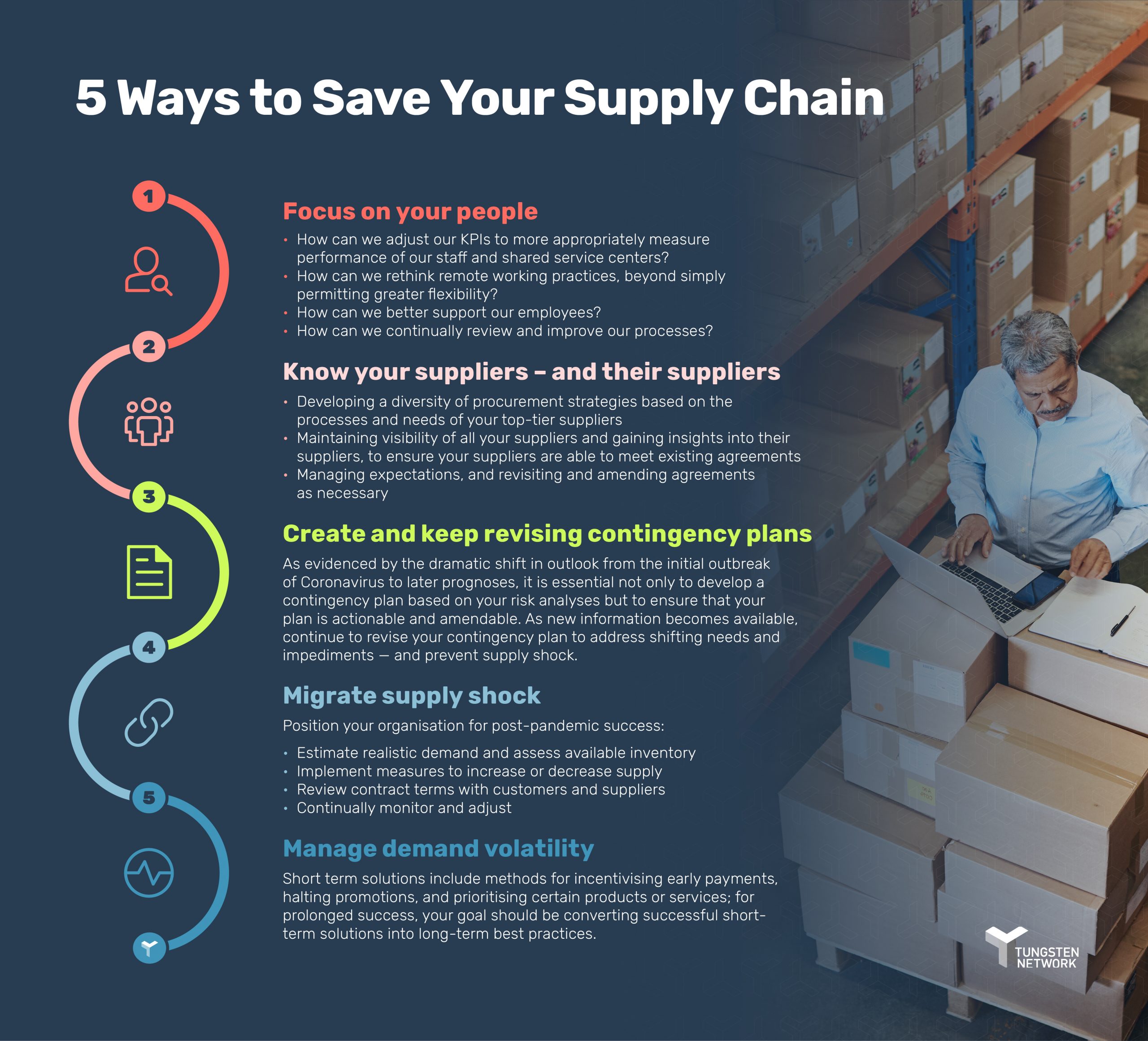The top 5 ways to save your supply chain

The keys to continuous cash flow, even during a crisis
No organisation or nation in the world has circumvented the impact of COVID-19 — and while some businesses have thrived in the new normal, most are merely surviving, combating drastic operational changes, supply chain delays, demand dropoffs, and cash flow shortages.
Fortunately, there are tactics you can employ to counteract the effects of the pandemic on your organisation.
Following are five ways to save your supply chain, with a list of recommendations to help you leverage these key opportunities for success now and into the future.

1. Focus on your people
With processing delays and differing regulatory mandates across countries and regions, global process maps and exception management processes administered by KPI-driven shared service centres and central administration hubs have been sacrificed in favor of more relaxed — and less measurable and secure — processes.
Key questions for organisations now and in the future include:
- How can we adjust our KPIs to more appropriately measure performance of our staff and shared service centres?
- How can we rethink remote working practices, beyond simply permitting greater flexibility?
- How can we better support our employees?
- How can we continually review and improve our processes?
2. Know your suppliers — and their suppliers
With delivery delays and other impediments to procurement caused by COVID-19, your knowledge of suppliers and their processes has never been more important, nor has your ability to remain agile in developing procurement strategies.
Recommendations include:
- Developing a diversity of procurement strategies based on the processes and needs of your top-tier suppliers
- Maintaining visibility of all your suppliers and gaining insights into their suppliers, to ensure your suppliers are able to meet existing agreements
- Managing expectations, and revisiting and amending agreements as necessary
3. Create and keep revising contingency plans
As evidenced by the dramatic shift in outlook from the initial outbreak of Coronavirus to later prognoses, it is essential to:
- Develop a contingency plan based on your risk analyses
- Adjust your plan, as necessary, to ensure it is actionable and amendable
- Continually monitor the impacts of the global crisis on your supply chain and overall business
- Revise your contingency plan to address new impediments and shifting needs
4. Mitigate supply shock
“Returning businesses to operational health after a severe shutdown is extremely challenging,” notes McKinsey & Company in its 2020 report Beyond coronavirus: The path to the next normal.
“Most industries will need to reactivate their entire supply chain, even as the differential scale and timing of the impact of coronavirus mean that global supply chains face disruption in multiple geographies… Leaders must therefore reassess their entire business system and plan for contingent actions in order to return their business to effective production at pace and at scale.”
To position your organisation for post-pandemic success:
- Estimate realistic demand and assess available inventory
- Implement measures to increase or decrease supply, as necessary and if possible
- Review contract terms with customers and suppliers
- Continually monitor and adjust
5. Manage demand volatility
In addition to assessing and addressing potential supply shortages, you’ll need to measure and maneuver in response to shifting demand.
Short term solutions include methods for:
- Incentivising early payments
- Halting promotions
- Prioritising certain products or services
- Converting successful short-term solutions into long-term best practices

Boosting your likelihood of sustained success
While no one has avoided the effects of COVID-19, the operational changes, supply chain delays and decreases in demand and cash flow have especially impeded organisations that still rely on old-fashioned manual invoice processing.
Why? Paper and PDF processes aren’t efficient, scalable or trackable; when paper fails it disrupts not only your daily financial processes but your business’s ability to move beyond merely cost-cutting to creating long-term value, and when paper fails during a global crisis you may face a complete system breakdown.
Meanwhile, organisations that digitise their P2P processes cut costs, enhance efficiency and expedite time to payment, safeguarding their supply chain and catalysing their cash flow.
As the European E-Invoicing Service Providers Association (EESPA) explains, “Today’s circumstances demand radical action to keep the wheels of commerce turning and supply chains delivering. For this to happen there must be timely electronic invoicing.”
With Total AP from Tungsten Network, you upload your invoice to the platform for buyer review, processing and approval, and upon approval payment is sent — and you can accommodate all your suppliers, regardless of size, location or maturity. Plus, you’re 100% digitised from day one.



